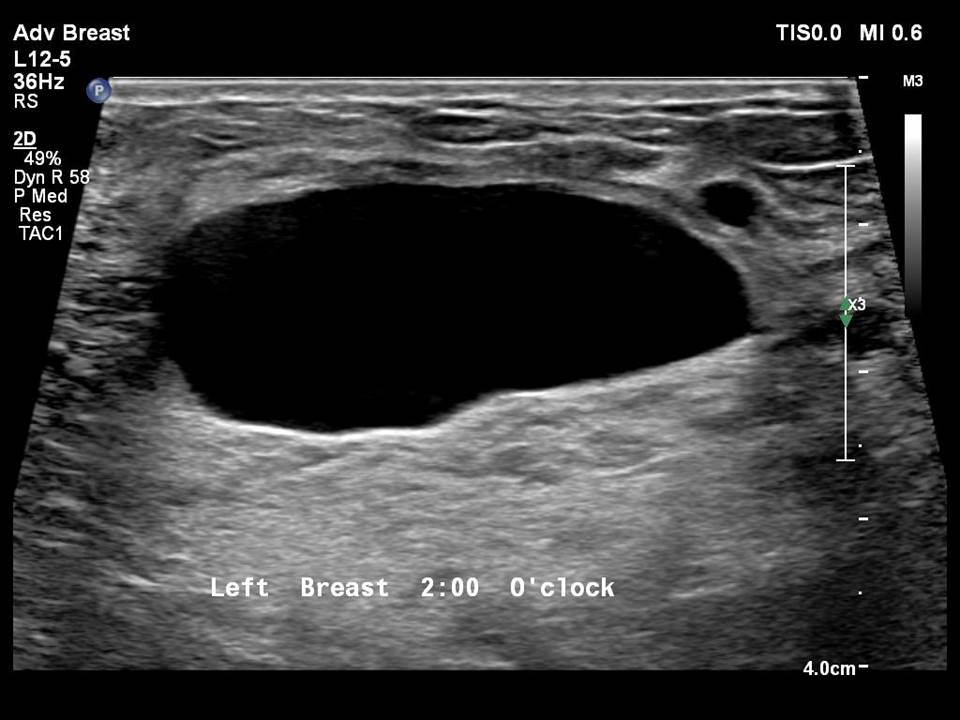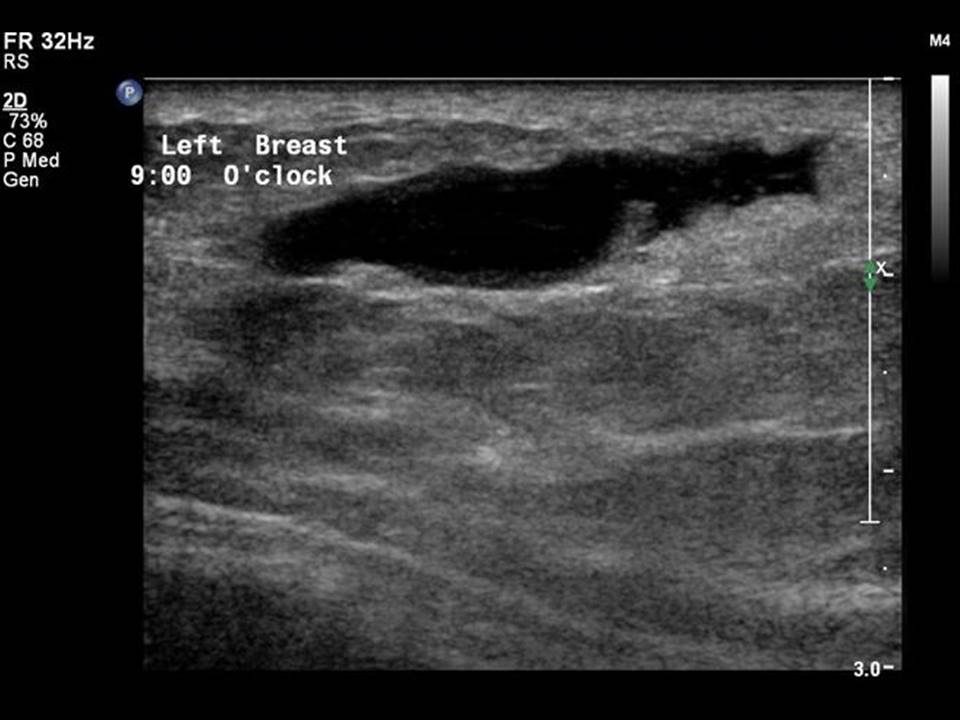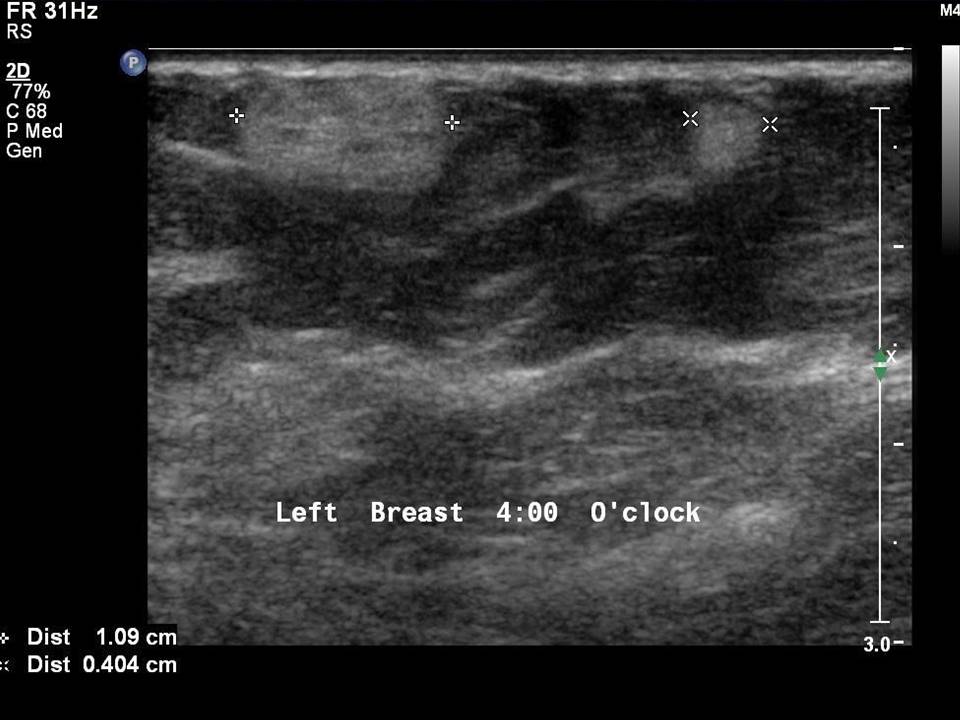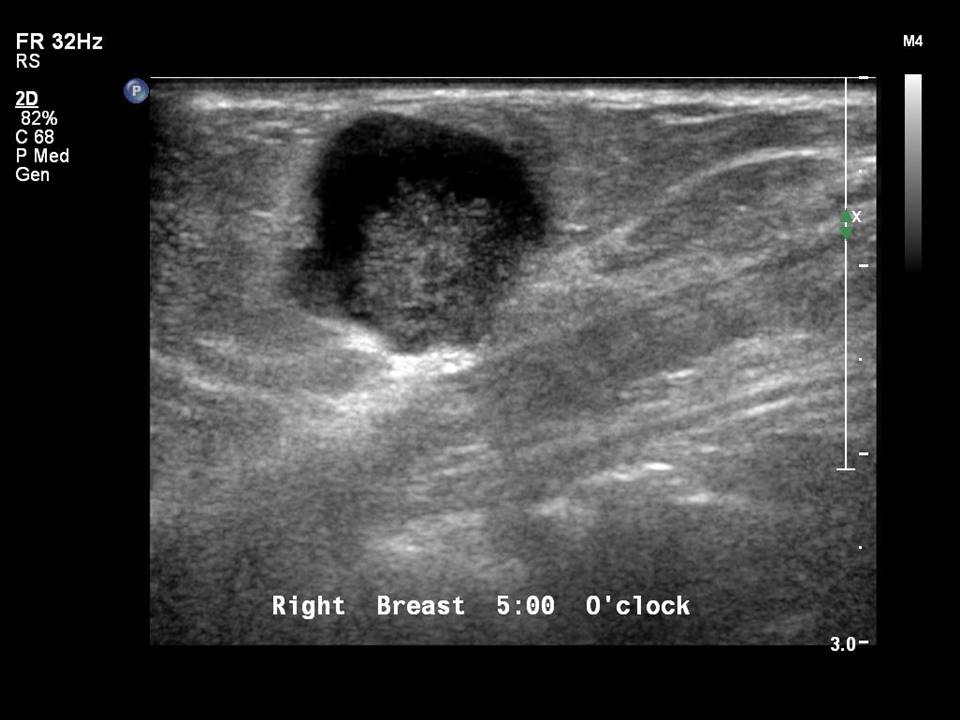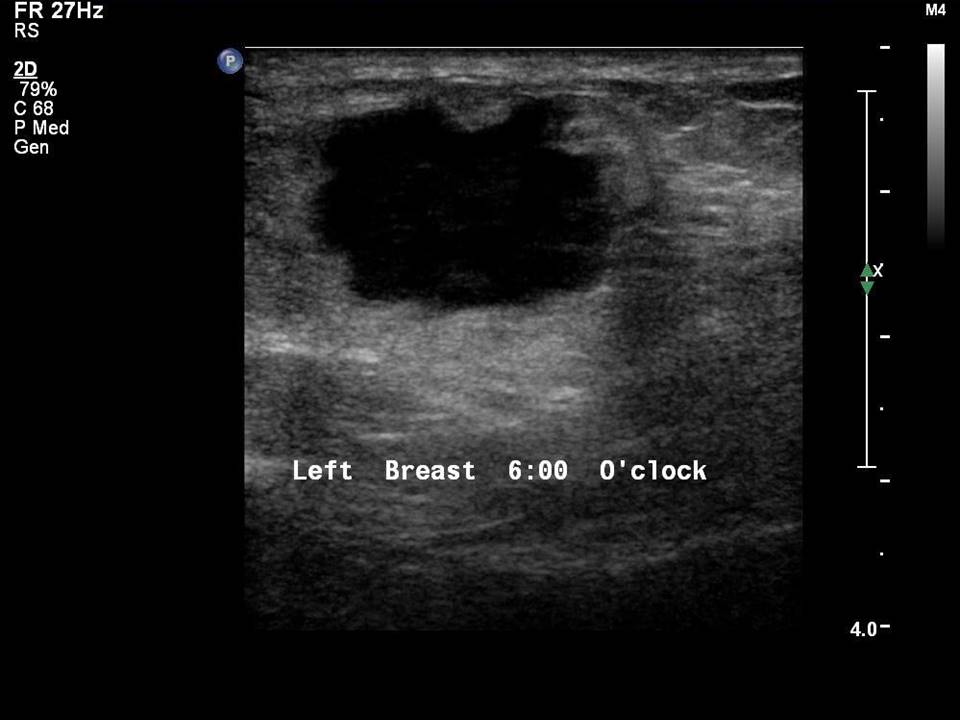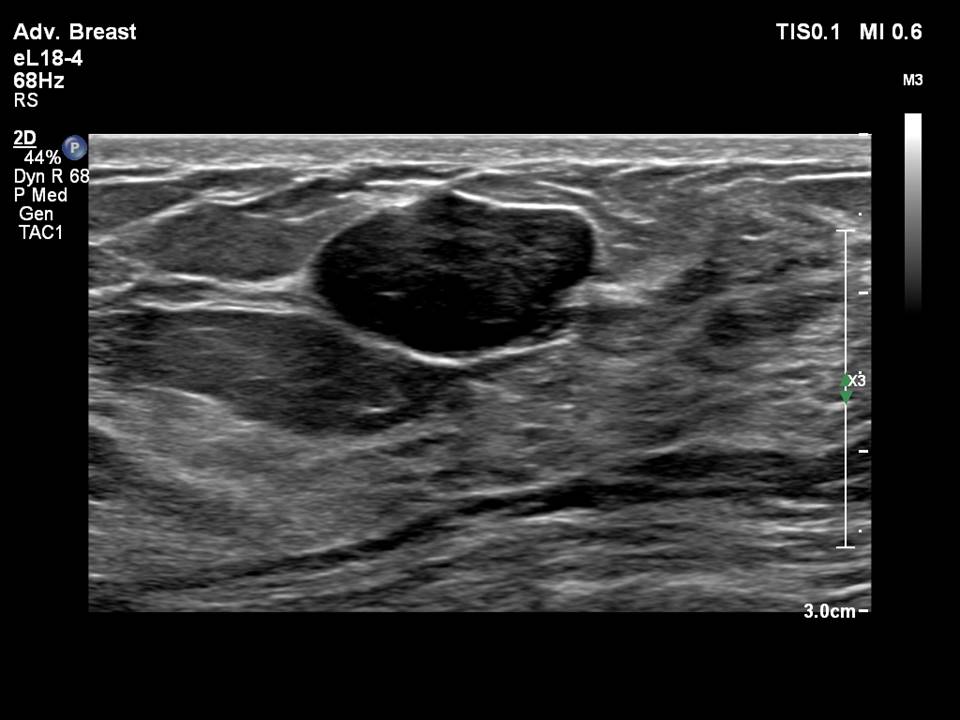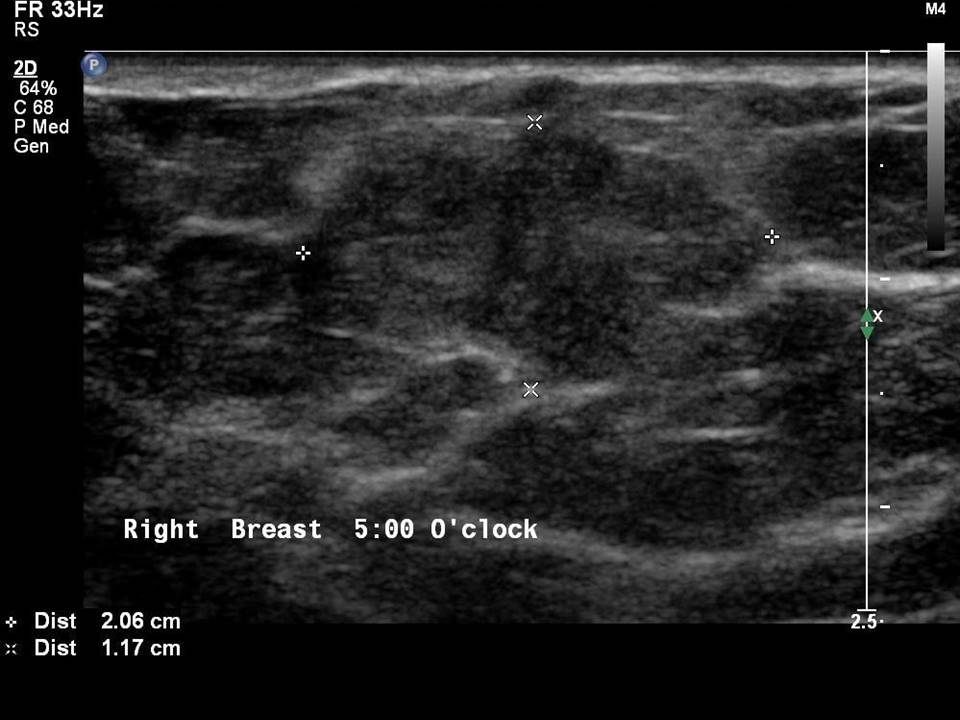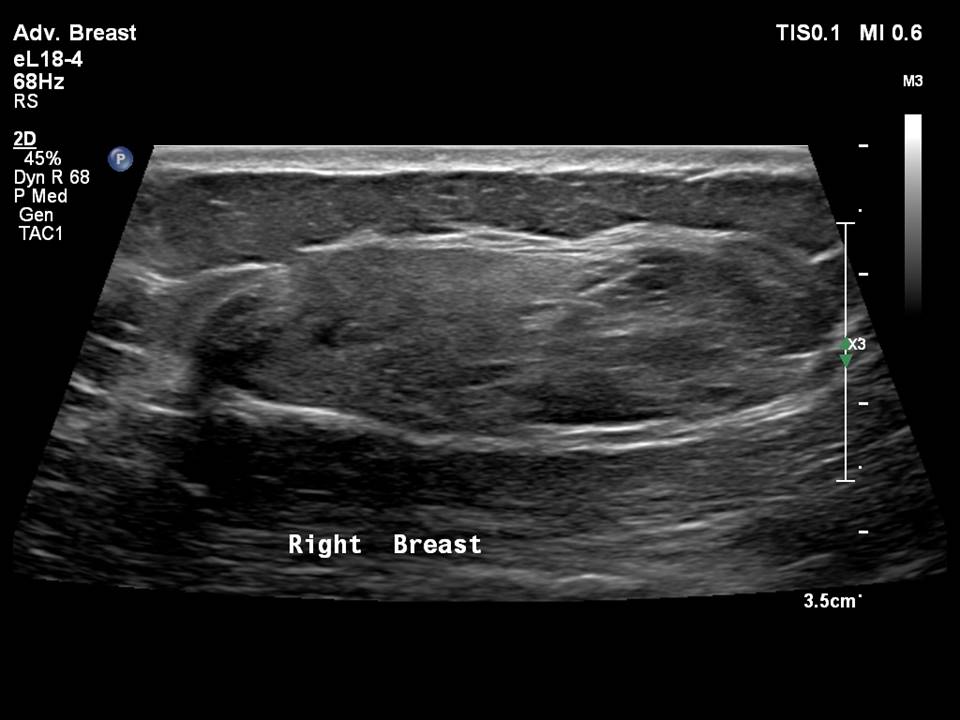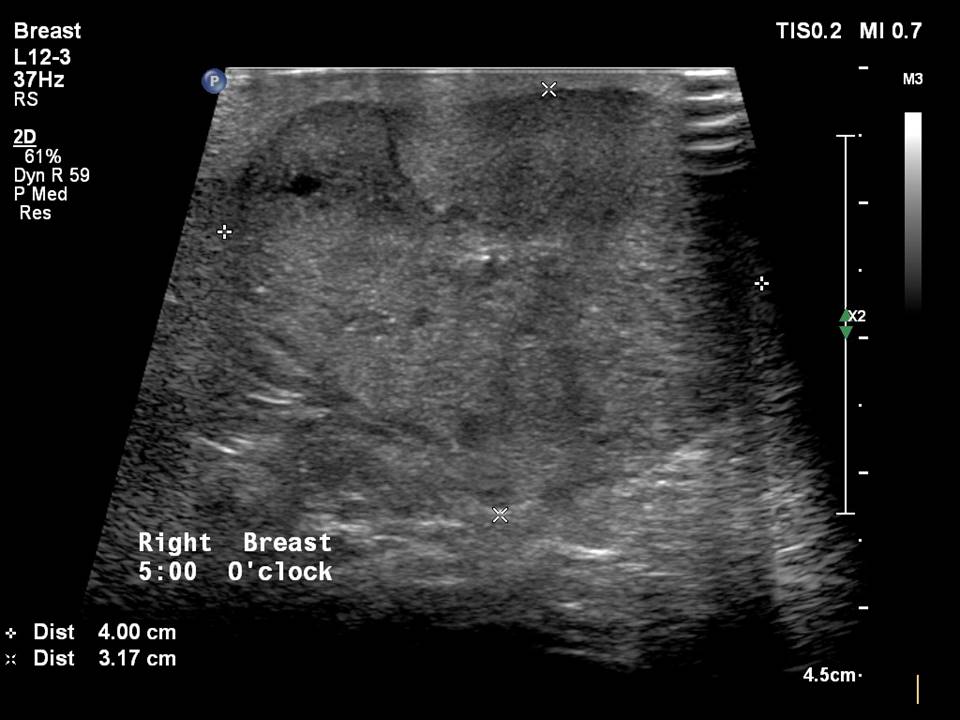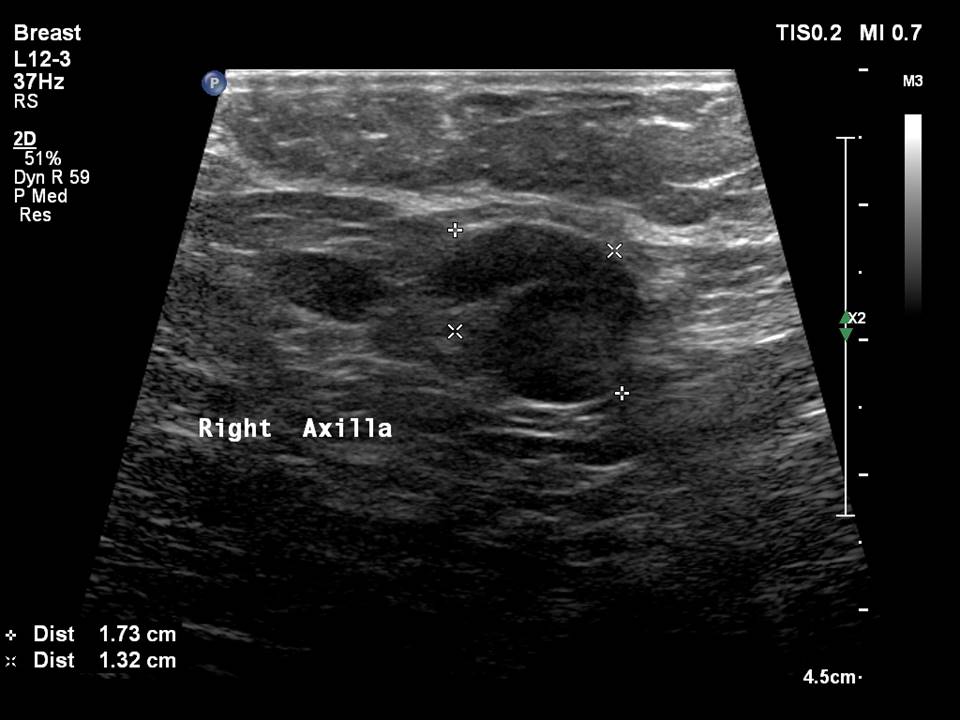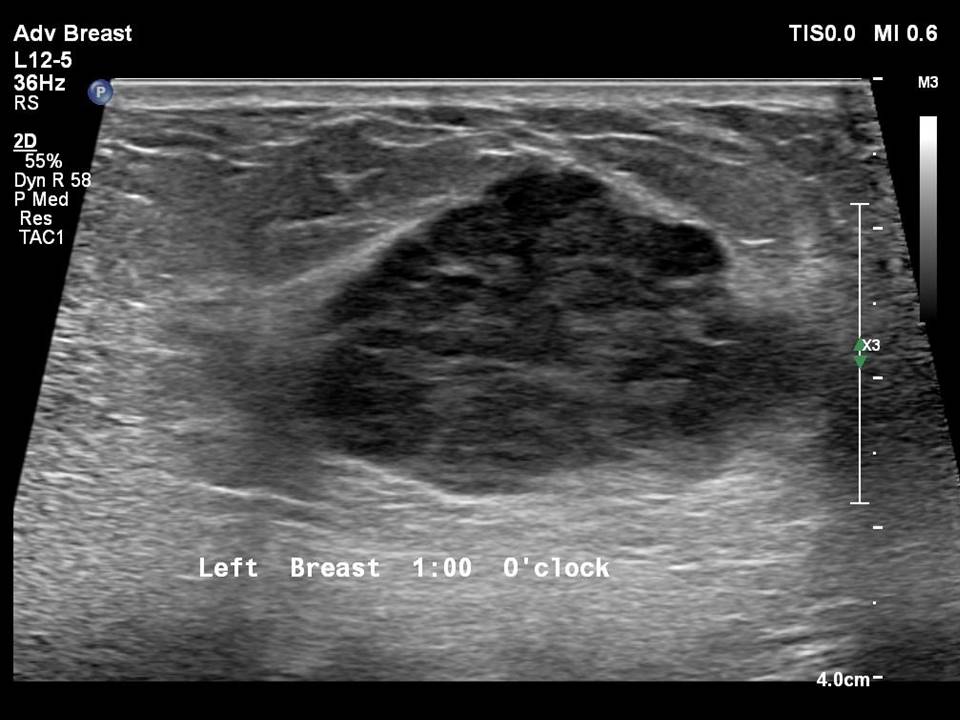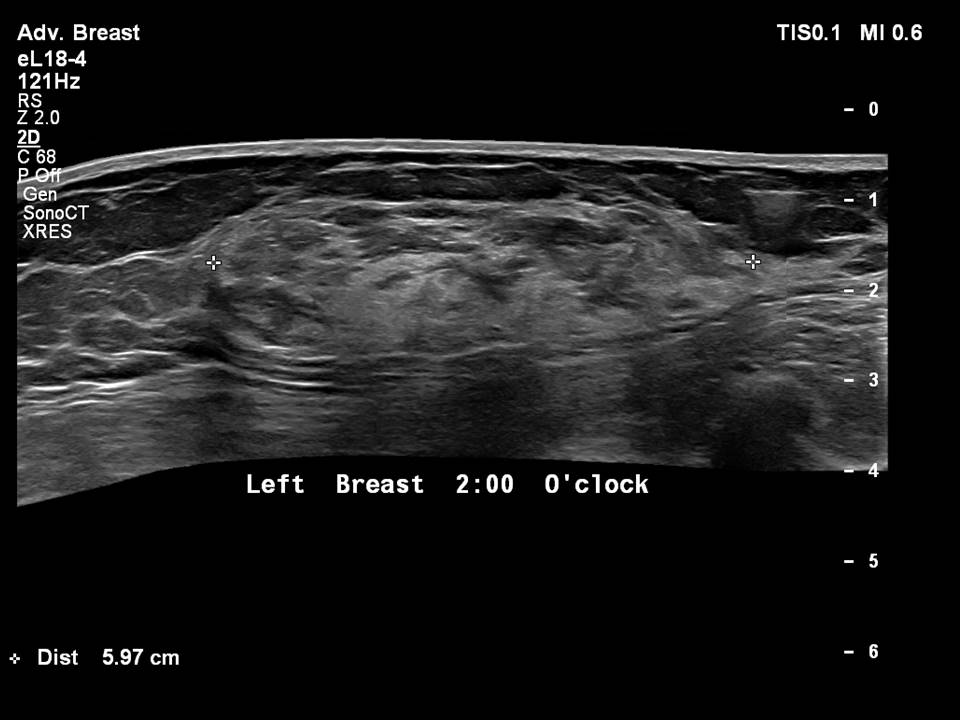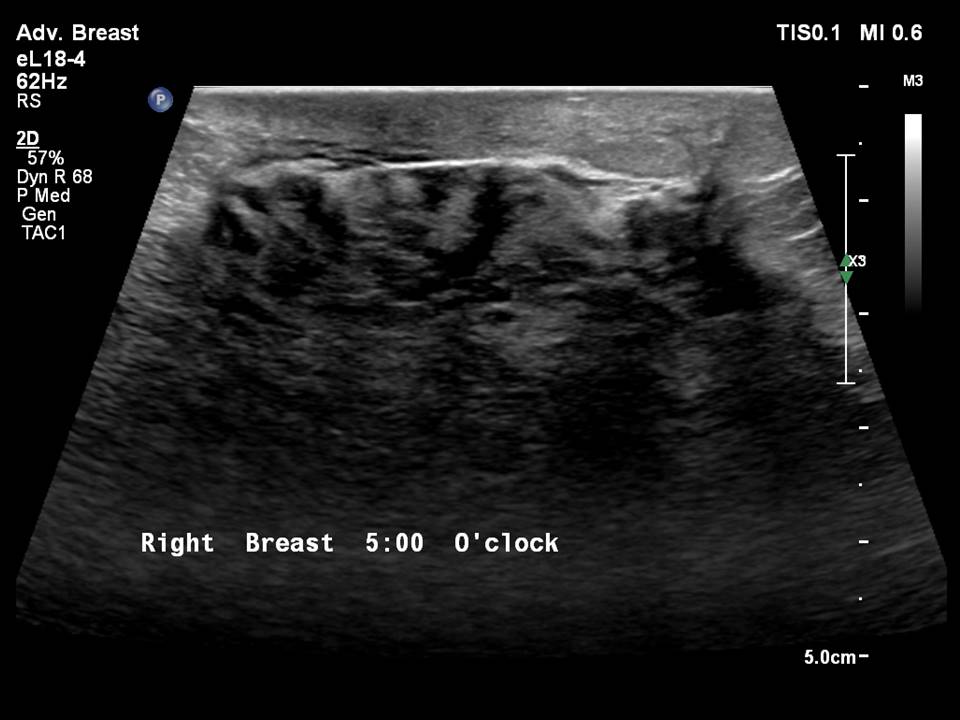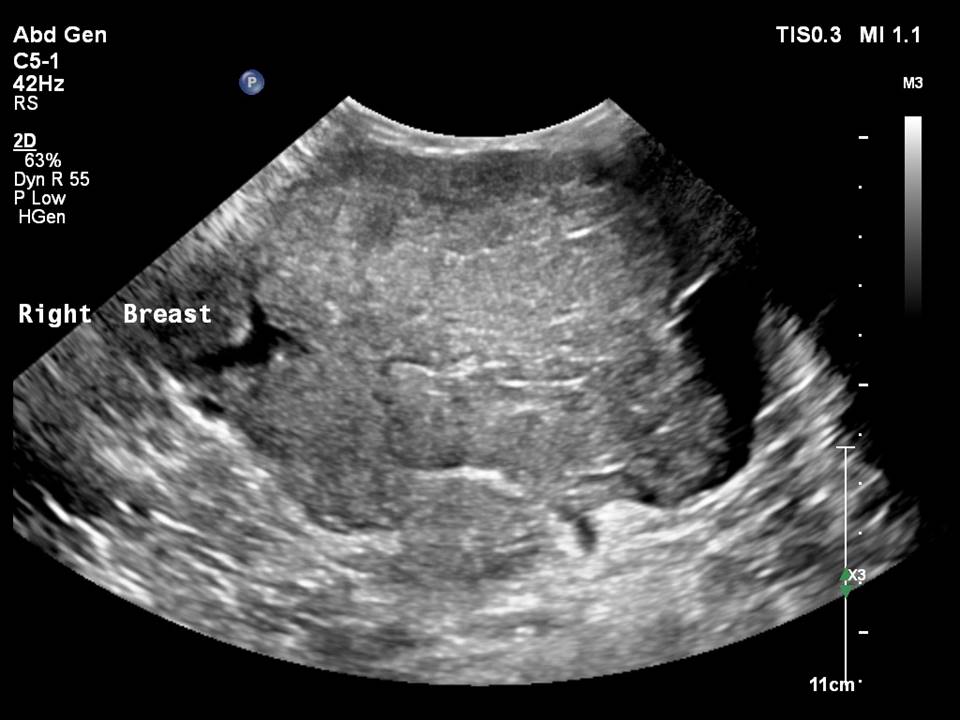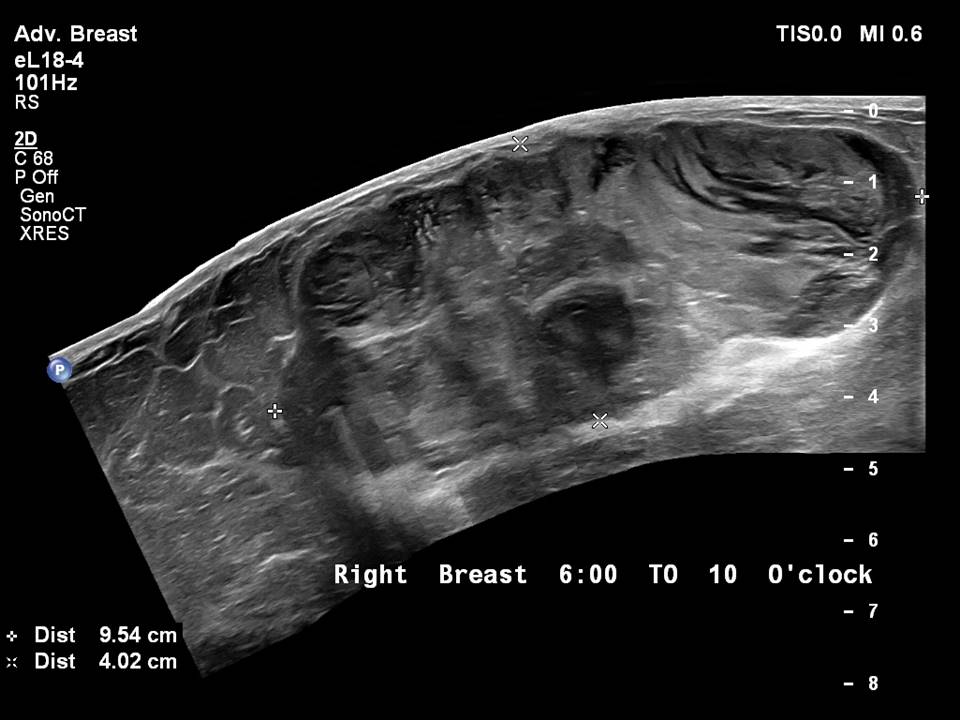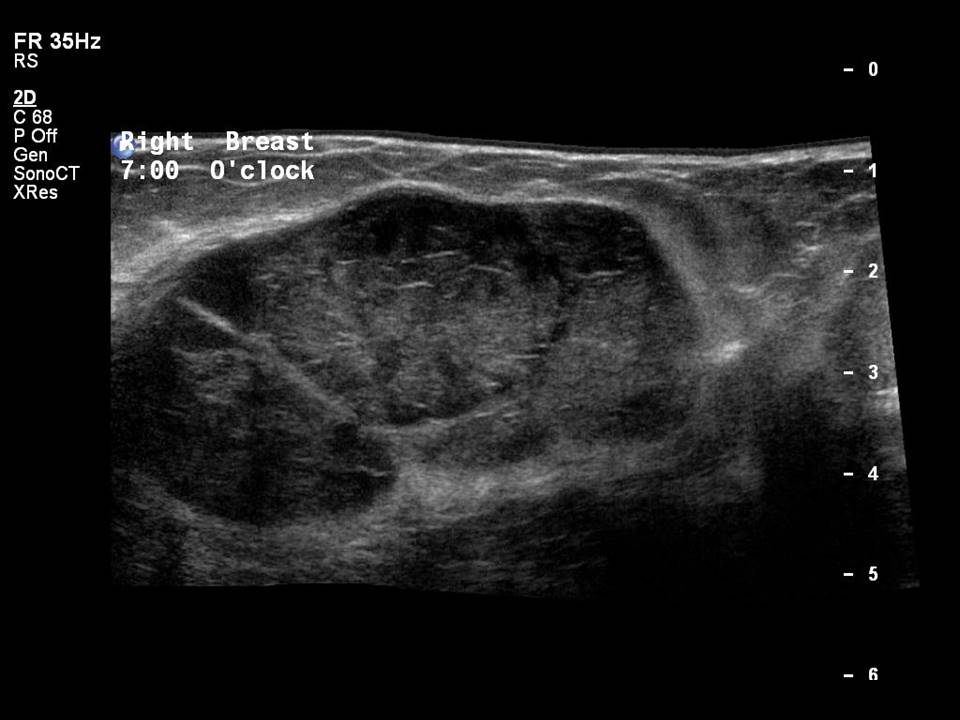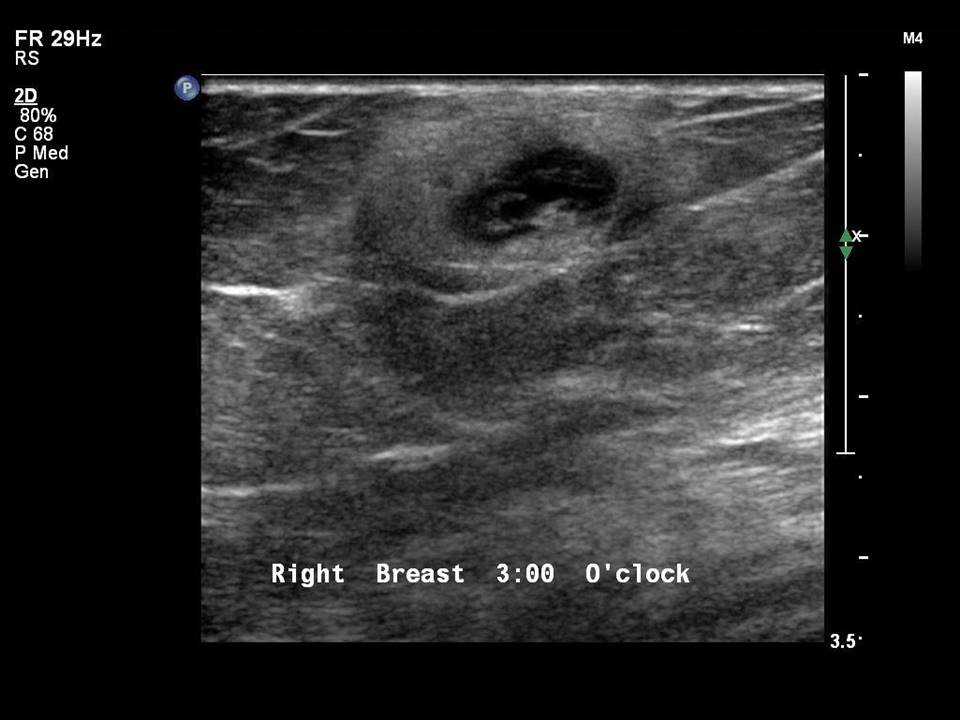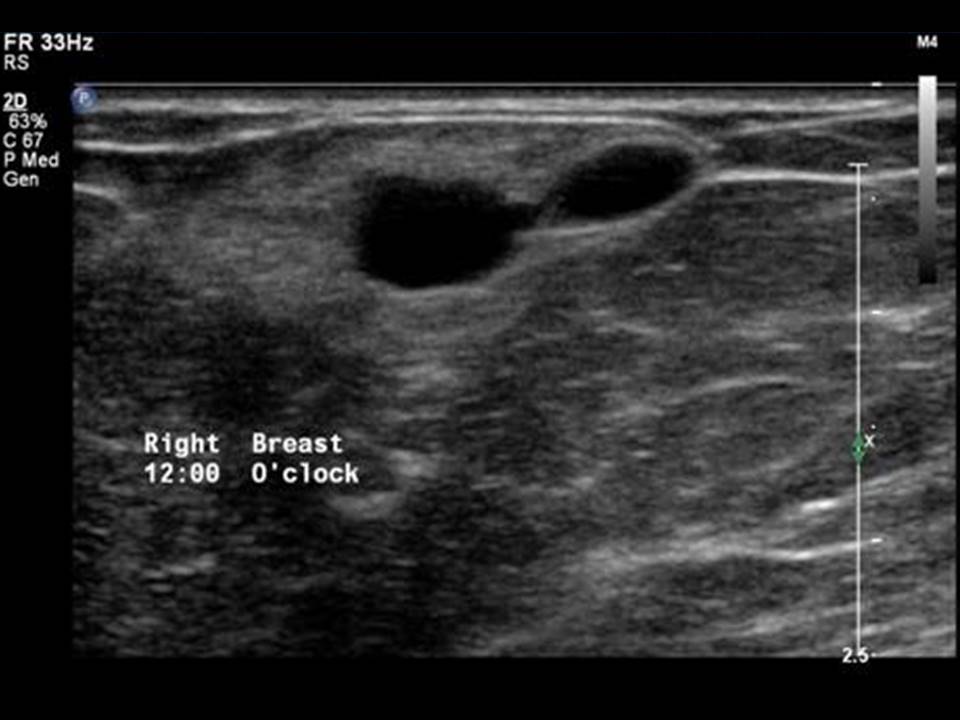Ultrasound has good sensitivity and specificity in distinguishing a cyst from a solid mass lesion of the breast. The echogenicity of a mass on ultrasound is described as anechoic, hyperechoic, complex cystic and solid, hypoechoic, isoechoic, or heteroechoic.
Anechoic
Anechoic echotexture is seen in a clear fluid-filled lesion, classically a simple cyst. This is a common benign breast lesion and ultrasound is the imaging of choice to identify it with good sensitivity and specificity if all the criteria are met  .
Hyperechoic
Hyperechoic echotexture is seen in fat-containing lesions, where the fat tissue in the lesion appears hyperechoic compared with the background fatty breast parenchyma, classically a lipoma. Hyperechoic mass can also be seen in lymphoma.
Complex cystic and solid
This lesion is a cystic mass and has a varying degree of solid components within. The solid component can be either a solid echogenic lesion along the wall, which is classically a papilloma, or an intracystic carcinoma. Fine internal echoes within complex cystic and solid lesions are seen in superadded haemorrhage or infection  .
Hypoechoic
Hypoechoic lesions are of lower echogenicity than the adjacent breast parenchyma. Both benign lesions and cancer can be hypoechoic in echotexture. Other morphological features will be helpful to characterize the mass   .
Isoechoic
An isoechoic lesion has the same echogenicity as the adjacent breast parenchyma. It is not specific for benign or malignant masses  .
Heteroechoic
Heteroechoic lesions have mixed echogenicity, with hypoechoic, hyperechoic, and isoechoic areas, indicating a range of cell types. A heterogeneous fat-containing lesion is more likely to be benign. A heterogeneous hypoechoic and hyperechoic lesion suggests a suspicious morphology. However, inflammatory lesions are also heterogeneous in echotexture. Indeterminate lesions should be evaluated with biopsy for tissue diagnosis  .
Echogenicity can contribute to the assessment of a lesion in association with other ultrasound features. It has little specificity on its own.
| .png)





